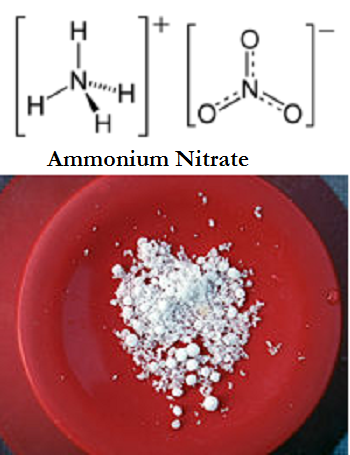 Obama just issued yet another Executive Order (E.O.) that will regulate certain chemicals deemed to be “hazardous.”
Obama just issued yet another Executive Order (E.O.) that will regulate certain chemicals deemed to be “hazardous.”
Some bloggers (here and here) are sounding the alarm that the the E.O. “will effectively ban Ammonium Nitrate in the USA.“
If true, that is alarming indeed because ammonium nitrate is commonly used in agriculture as a high-nitrogen fertilizer. If it is banned, that will increase farming costs, which in turn will lead to higher food and gas prices — all prices that the federal government conveniently excludes as indices of inflation.
But those alarmist bloggers do not cite, as evidence, quotes from the primary source, i.e., the Executive Order “Improving Chemical Facility Safety and Security.“
So I went to the primary source itself.
The E.O. “Improving Chemical Facility Safety and Security” was issued on August 1, 2013. It empowers the federal government to take vague and unspecified “additional measures … by executive departments and agencies (agencies) with regulatory authority to further improve chemical facility safety and security in coordination with owners and operators.” (See Sec. 1 of E.O.)
To do that, the E.O. creates yet another bureaucracy — a Chemical Facility Safety and Security Working Group (hereafter, Working Group) — that is co-chaired by (SURPRISE! – not) the Secretary of Homeland Security, the Administrator of the Environmental Protection Agency (EPA), and the Secretary of Labor or their designated representatives at the Assistant Secretary level or higher. (See Sec. 2 of E.O.)
Among the tasks assumed by the Working Group are the following:
- Undertake a thorough review of categories of chemicals (Sec. 3: iii).
- Collaborate with State, local, and tribal governments and private sector partners “to achieve a more comprehensive engagement on chemical risk management” (Sec. 3: iv).
- Identify chemical facilities which may not have provided all required information or may be non-compliant with Federal requirements to ensure chemical facility safety (Sec. 5a).
- Develop regulatory and legislative proposals to improve the safe and secure storage, handling, and sale of ammonium nitrate and identify ways in which ammonium nitrate safety and security can be enhanced under existing authorities (Sec. 6b).
- Identify a list of chemicals, including poisons and reactive substances, that should be considered for addition to the Chemical Facility Anti-Terrorism Standards (CFATS) Chemicals of Interest list. (Sec. 6d).
Read the Executive Order for yourself by clicking here.
In other words, a review of the primary source of Executive Order “Improving Chemical Facility Safety and Security” shows that it does not ban ammonium nitrate, but seeks to “improve” the chemical’s “safe and secure storage, handling, and sale.”
Ammonium nitrate is not a harmless benign chemical. While widely used as a fertilizer in U.S. farming, it is also used as an oxidizing agent in explosives, including improvised explosive devices. It is the main component of ANFO, a popular explosive, which accounts for 80% explosives used in North America.
Moreover, the chemical also has decided health hazards:
- Short-term exposure to ammonium nitrate can cause symptoms ranging from minor irritation to nausea, vomiting, gastric irritation, headaches, dizziness and hypertension.
- Chronic exposure to ammonium nitrate may lead to orthostatic hypotension, methemoglobinemia, faintness, fatigue, weakness, depression, mental impairment, dizziness, shortness of breath, reflex tachycardia, headache, nausea, vomiting, and nephritis.
While the new Executive Order doesn’t actually ban ammonium nitrate, farmers should heed this and demand more information from their Congress critters.
~Eowyn

